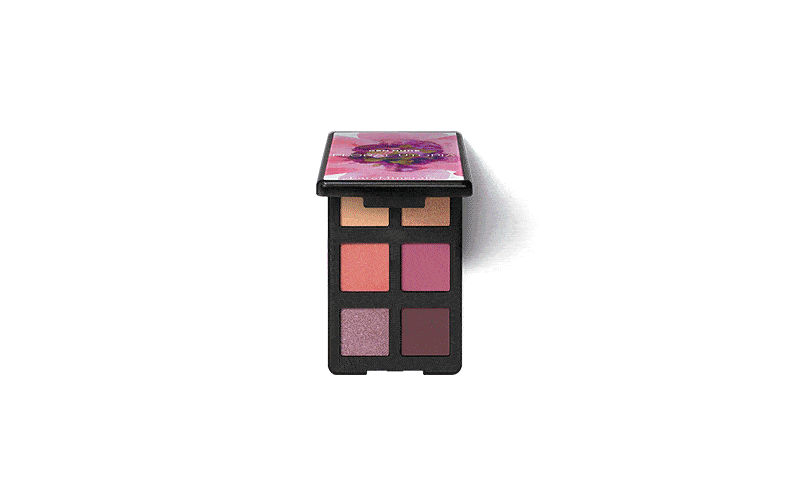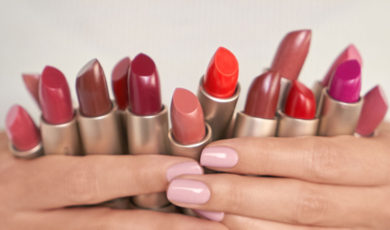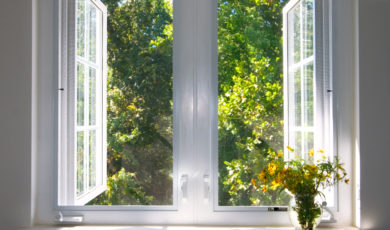It’s Spring! How to Make Your Home a Floral Utopia

Here in New York, farmers’ markets are getting more colorful, leaves are poking out from tree branches in parks that were barren and beige just a few weeks ago and, at long last, the first blooms are emerging — the ultimate sign that it’s spring. This transformation was the inspiration for our exclusive, limited-editionFloral Utopia collection, which features a pearlescent Highlighter Stick, Patent Lip Lacquers, blendable Powder Blushes, a six-pan Eyeshadow Palette, and a trio of ombré makeup brushes — all blooming in floral-inspired hues. Ready to fully embrace the season? Read on for everything you need to make your home a floral utopia, featuring six flowers that inspired shades in the collection.
Blue Wild Indigo
If you have a garden, blue wild indigo is a must. With a cool-toned purple flower (seen in our Floral Utopia Highlighter Stick in Indigo Girl) and a bloom time that extends from late April through August, it’s great for adding some unexpected color to a backyard. This plant is perfect for any gardening novices, requiring little water, no fertilizer and no pruning. While the flowers look bright and beautiful in the ground, they turn black as soon as you cut them. So leave them be to enjoy them at their best!
Dahlias
Dahlias exude classic beauty in shades that range from pure white to deep plum (the latter inspired Dark Dahlia, a shade in our Floral Utopia Eyeshadow Palette). You’ll recognize them from floral arrangements and wedding bouquets, but they’re also easy to grow. All they need is partial-to-full sunlight, good drainage and occasional watering. Once planted, they’ll bloom from mid-July until the first frost — just trim buds down and tie long stems to stakes to encourage growth.
Orchids
While, yes, orchids can bloom year-round, there’s something very spring-like about their unique shades of light pink (found in our Floral Utopia Powder Blush in Tropical Orchid and Floral Utopia Patent Lip Lacquer in Orchid-ing Around). Plus, this is the perfect houseplant for anyone who struggles to keep plants alive. Orchids require little watering (overwatering can make them moldy), very little fertilizer, and not much direct light. To make sure they bloom in full color, position them near south and east-facing windows — and try not to re-pot unless it’s completely necessary.
Poppies
This bright red-orange flower lulled Dorothy and her friends into a deep sleep in The Wizard of Oz. But don’t worry — that exact species isn’t legal for home gardens, but other varieties, such as the California poppy and red roppy, are beautiful additions to any small garden (and the inspiration behind our Floral Utopia Gen Nude Powder Blush in Blooming Poppy). With growth of up to 24 inches and direct sunlight required, it’s best to grow these outside, watering at least once a week. Similar to blue wild indigo, poppies are best left to brighten your garden; the petals start falling off immediately after they’re cut.
Tulips
Is there such a thing as spring without tulips? This bouquet favorite comes in over 150 species, with vibrant shades for every personality, from yellow to pink to white, and of course purple (the color we chose for our Floral Utopia Lip Lacquer in Put Tulips Together). They bloom best when planted in mid-to-late fall to allow for a dormant winter of root growth. Once rooted, the bright buds make their appearance as early as March and bloom for around a month. To create a perfect centerpiece that blooms over time, clip the flowers when they have color about two-thirds of the way up tight buds.
Hibiscus
As the universal flower emoji, hibiscus flowers have their fair share of popularity. (It’s part of the reason why we chose the shade for our Floral Utopia Lip Lacquer in Hibiscus Bye-Biscus.) While they’re not the easiest to grow at home, it’s not impossible, and they can be planted year-round in hot and humid climates. To get the most out of your hibiscus, plant seeds in an area with direct sunlight and plenty of water (or around one inch of rainfall per week). They require a labor of love but are totally worth it — and they’re even edible! Throw a few petals in boiling water to create a sweet and healthy natural tea.





